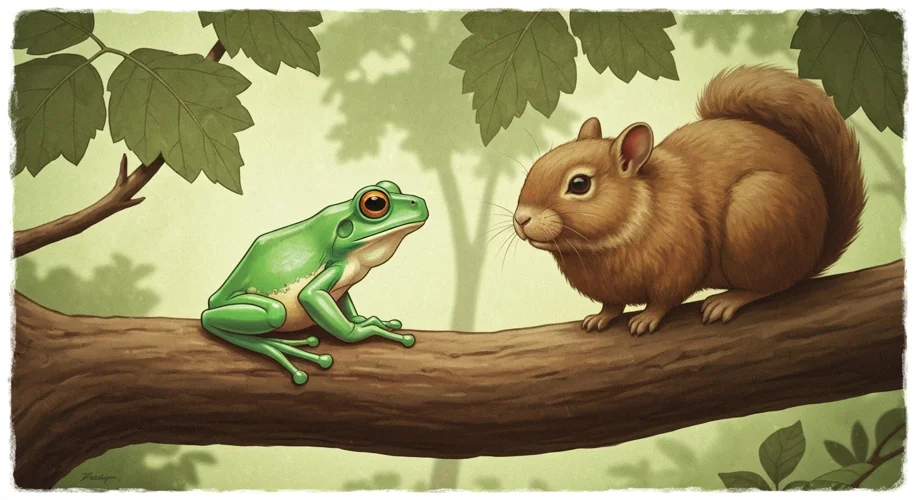Has this ever crossed your mind? You look at a frog, a snake, or a parrot, and they’re often a vibrant green. It’s a fantastic color for blending in, right? So why don’t we see many green mammals walking around? I mean, there are a few exceptions, but it’s surprisingly rare when you think about how common green is in the animal kingdom.
As someone who’s spent a lot of time thinking about Earth’s systems, from the atmosphere to ecosystems, this question really sparks my curiosity. It gets at the heart of how life adapts and what biological limits we have.
The Pigment Problem
The easiest answer usually comes down to pigments. Most animals get their colors from special molecules called pigments. For green, the usual suspects in birds, reptiles, and amphibians involve combinations of yellow pigments (like carotenoids, often from their diet) and structural colors that reflect blue light. Think of a hummingbird’s iridescent feathers – that’s not just pigment; it’s the way light bounces off tiny structures.
Mammals, on the other hand, primarily rely on melanin. Melanin is responsible for the browns, blacks, and sometimes reds and yellows in our fur and skin. It’s a really versatile pigment for protection, from UV radiation to even camouflage in certain environments. But melanin just doesn’t produce green.
A Different Evolutionary Path
So, why didn’t mammals evolve to use green pigments or the structural tricks that other animals use? It might be a mix of things:
- Melanin’s Advantages: Melanin is incredibly effective for mammals. It provides warmth, protects against sun damage, and can be a great camouflage in earthy tones. Perhaps evolving a different color system just wasn’t as advantageous for our furry ancestors.
- Dietary Limitations: Many green animals get their yellow pigments from plants. While mammals eat plants, their digestive systems are very different from those of, say, reptiles. It might be harder for mammals to efficiently extract and utilize the specific carotenoids needed for green coloration.
- Hair vs. Feathers/Scales: The structure of mammal fur is also different from bird feathers or reptile scales. Feathers and scales have unique ways of interacting with light that can create vibrant blues and greens through structural coloration. Mammalian hair, while great for insulation, doesn’t seem to lend itself as easily to creating these complex optical effects.
The Rare Green Mammals
It’s worth mentioning that there are a couple of cases that seem like exceptions, but they’re not quite what you might think. The sloth, for instance, often appears green, but that’s not from its fur pigment. Algae actually grow in the coarse, grooved fur of sloths, providing them with excellent camouflage in the trees. It’s a symbiotic relationship – the sloth provides a home, and the algae provide a green disguise.
A Question of Survival
Ultimately, the lack of green mammals is a fascinating example of how evolution shapes life based on existing structures and the environmental pressures faced by different groups of animals. While green is a fantastic camouflage color in many environments, the evolutionary toolkit available to mammals, primarily melanin and the structure of their fur, simply didn’t lead to widespread green species. It’s a reminder that nature finds solutions in many different ways, and sometimes, the most obvious color isn’t the one that makes it to the finish line for every creature.
It really makes you appreciate the diverse ways life adapts to its surroundings!

